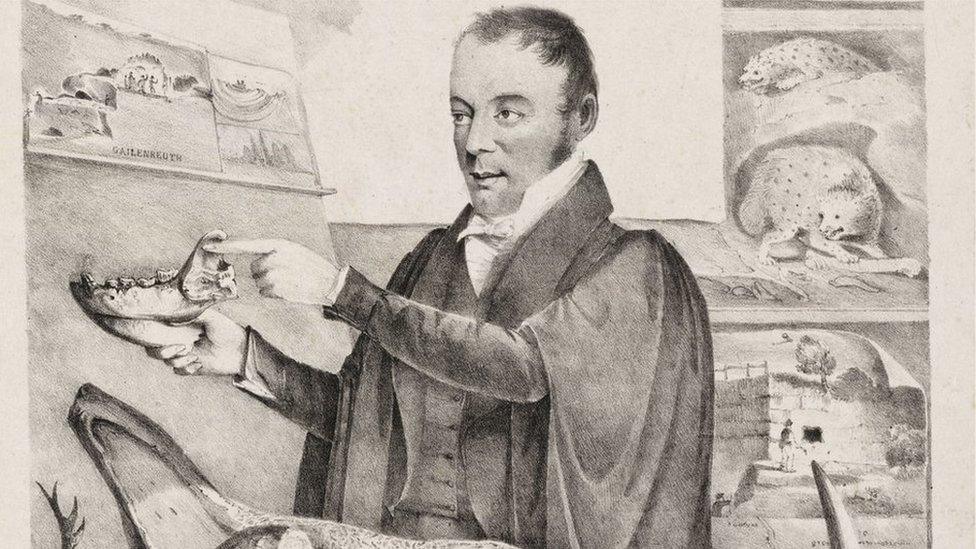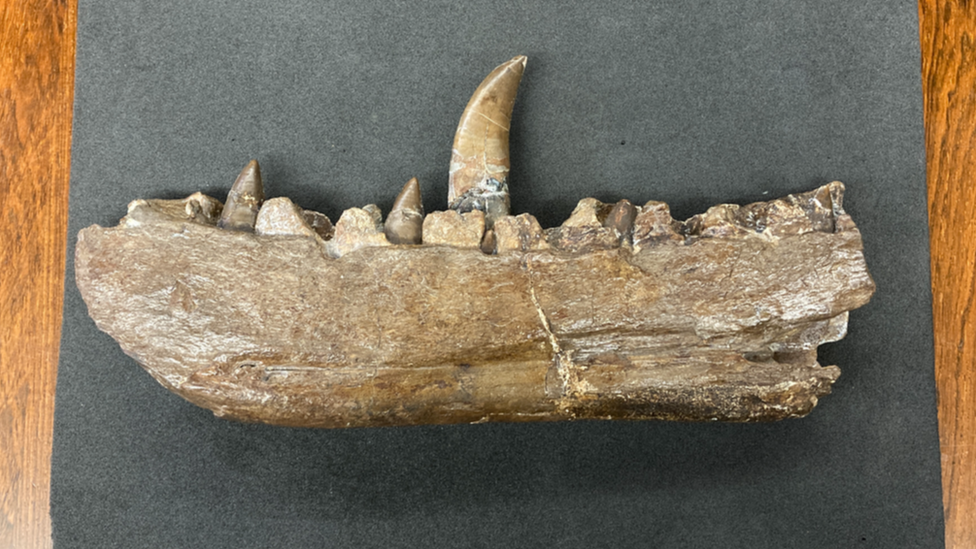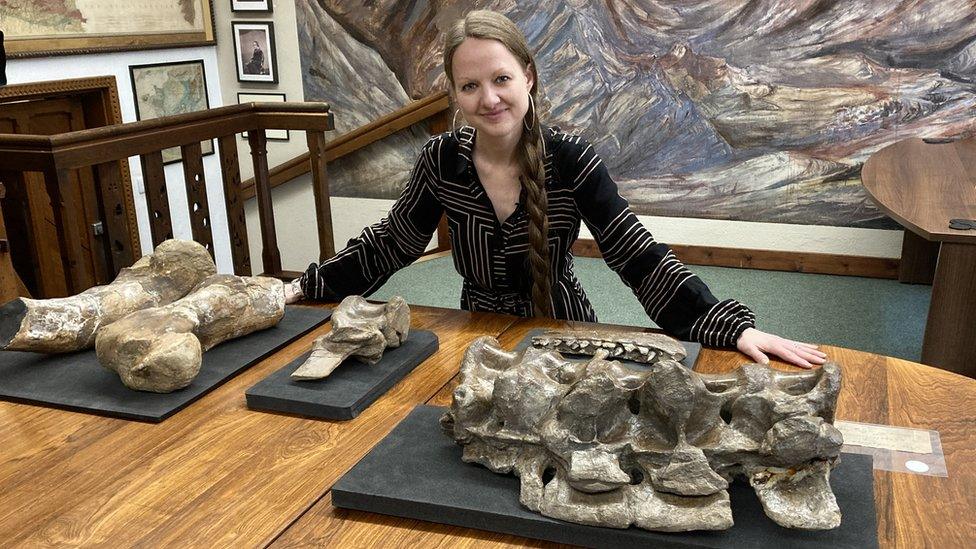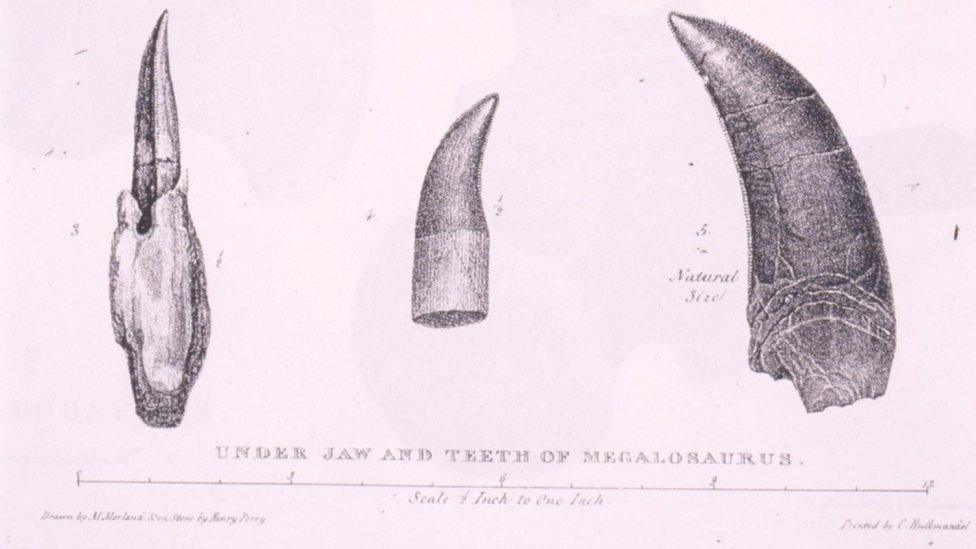Oxford University celebrates 200 years of first dinosaur Megalosaurus
- Published

An artist's impression of how Victorian palaeontologists thought the Megalosaurus looked (right) and how modern scientists understand it to have looked (left)
Scientists are celebrating the 200th anniversary of the first formal naming of a dinosaur.
Oxford University's first reader in geology, William Buckland, described the species Megalosaurus to the Geological Society on 20 February 1824.
His paper was based on fossils discovered at Stonesfield in Oxfordshire, which had been collected over several decades.
The university said it was a "pivotal moment" in science.

William Buckland was a pioneer in the field of geology
Dr Emma Nicholls, from Oxford's Museum of Natural History, said large fossilised bones found around the world were previously thought to come from "clumsy, overgrown lizards", elephants or even giant humans.
She said: "The description of Megalosaurus introduced us to a new group of organisms and inevitably reframed our understanding of the history of life on Earth.
"We now know that these beloved reptiles were a hugely diverse and highly successful group of animals that persisted for at least 220 million years and ruled the globe."

An iconic Megalosaurus jaw fragment, described by Buckland, is in the Oxford University collection
Buckland's 1824 paper was the culmination of the work of several scholars, who had already named Megalosaurus and other species.
In his lecture, he described bones from separate individuals of an "enormous fossil animal... [with] a length exceeding 40 feet [12m] and a bulk equal to that of an elephant".
He incorrectly thought it walked on all fours and was "probably amphibious".

Dr Emma Nicholls said Buckland's paper was a "pivotal moment" in science
Megalosaurus, meaning "great lizard", was one of the largest carnivores of the middle Jurassic era, living about 168 million years ago.
It was one of three species for which the overarching term dinosauria was later coined in 1842 by the anatomist Richard Owen.
The concept was so popular that Charles Dickens' novel Bleak House (1852) opened with a description of a metaphorical "Megalosaurus, forty feet long or so, waddling like an elephantine lizard" through muddy London streets.
The museum is hosting an anniversary celebration of Buckland's lecture later, as well as marking his work with an exhibition in October.

Buckland's paper contained illustrations by his wife Mary

Follow BBC South on Facebook, external, X, external, or Instagram, external. Send your story ideas to south.newsonline@bbc.co.uk.
Related topics
- Published16 January 2024

- Published10 June 2017
